Kung Pao Shrimp is a dish I find myself making time and time again because it’s just so delicious. Every bite is bursting with bold, well-balanced flavors that are slightly sweet, savory, and a little spicy. This stir-fry includes ingredients like Sichuan peppercorns and dried chilies, delivering a classical Sichuan flavor that is wonderfully aromatic.
Note: This post may contain affiliate links. Please read my privacy policy for more info. I may receive commissions for purchases made through links in this post. As an Amazon Associate, I earn from qualifying purchases.
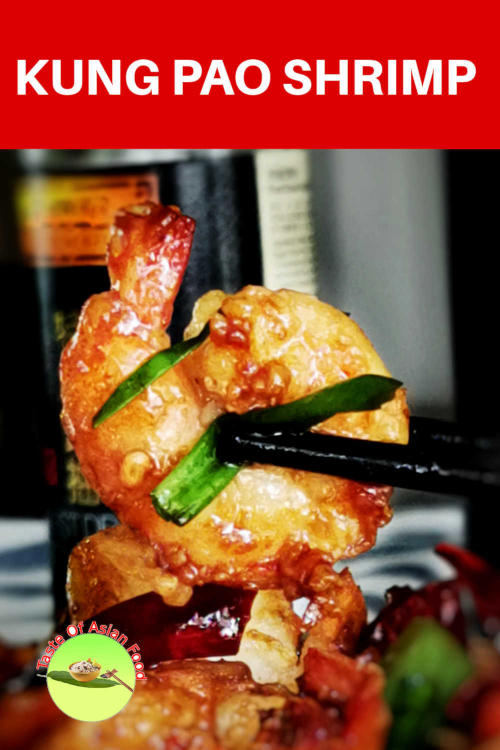
Main Ingredients Required for Kung Pao Shrimp
- Shrimp. I used medium-sized shrimp, with the heads and shells removed but the tails left on for a better presentation. I always use fresh shrimp, as the market is just near where I live. You can use store-bought frozen, shelled shrimp, but the results may not be as good.
- Nuts. Kung Pao-style cooking typically includes either peanuts or cashews. For this recipe, I chose cashews because of their richer flavor, though peanuts work just as well.
- Aromatic ingredients. The key ingredients that create the distinctive Kung Pao flavor are garlic, fresh ginger, scallions (green onions), and dried chilies. This combination is fairly standard in most traditional Kung Pao sauces.
- Kung Pao sauce. The Kung Pao sauce is made with light soy sauce for its savory flavor, Chinkiang vinegar for acidity, and a touch of sugar to balance the rice vinegar. Besides these main seasoning ingredients, a small amount of dark soy sauce gives a caramelized color, some sesame oil, and Shaoxing wine to accentuate the taste. The ratio of these ingredients varies. The key is to include a savory, acidic, and sweet flavor, complemented by the spiciness and numbness derived from the chili and Sichuan peppercorns.
- Others. The traditional Kung Pao shrimp recipe typically includes only a few additional ingredients, aside from peanuts. This recipe consists of red bell peppers, yellow onions, and uses toasted cashews instead of peanuts.
Note: The following translations are the same: kung pao shrimp, kung bao shrimp, kong po shrimp, and kung bo shrimp. They are all derived from the Chinese name 宫保虾球。
How to make kung pao shrimp
Below are the steps I followed to prepare Kung Pao Shrimp.
1. Prepare the shrimp for stir-frying.
- Wash the shrimp thoroughly with plenty of water to remove any dirt, then drain them in a colander. Remove the heads and shells, but retain the tails for better presentation.
- Butterfly the shrimp by slicing them in half lengthwise and gently flattening them. This not only makes them look more appealing after frying but also makes it easier to remove the vein (the digestive tract) along the back.
- Pat the shrimp dry with a kitchen paper towel or clean cloth. If the shrimp are too wet, they may splatter when deep-fried.
- Season with salt and ground white pepper. White pepper helps mask any unwanted ‘fishy’ smell.
- Coat the shrimp with egg white, then coat them with cornstarch. This creates a light coating that crisps up nicely when fried.
2. Prepare the kung pao sauce and other ingredients
- Peel the garlic and give it a rough chop. I usually avoid chopping it too finely, as it can burn quickly in the wok. Also, thinly slice a few pieces of ginger.
- Divide the scallions into two parts by cutting them crosswise to separate the white and green sections. Cut the white portion into ¼-inch short sections and the green portion into 1-inch lengths. Use the white section as part of the aromatics at the beginning of cooking, and reserve the green section for the final stage to add freshness and color.
- Combine all the sauce ingredients listed under Ingredient C in the recipe to make the spicy sauce.
3. Deep-fry the shrimp
- Heat oil with a high smoke point (such as corn oil, canola oil, palm oil, or peanut oil) over medium-high heat for deep-frying the shrimp. I usually fry them in small batches to minimize the amount of oil used.
- While deep-frying, let the shrimp cook undisturbed for about 15 seconds, then gently stir them to loosen and separate. Stirring also helps prevent the shrimp from sticking to the hot wok.
- Once the shrimp begin to turn from opaque to light pink, remove them and place them on a wire mesh strainer to drain the excess oil. Repeat the process until all batches are cooked.
4. Stir-Frying to Finish the Cooking
- Heat some oil in a clean wok or large skillet, add the Sichuan peppercorns, and toast them over low heat for 1 to 2 minutes to release their flavor. Then discard the peppercorns.
- Sauté the garlic, ginger, the white section of the scallion, and the dried chilies in the peppercorn-infused oil over low heat until aromatic.
- Cut the onion into half-inch cubes and add them to the wok. Stir-fry until slightly translucent, then add the green bell pepper (cut into one-inch squares) and continue stir-frying over medium heat for about 30 seconds.
- Pour the Kung Pao sauce into the wok and give everything a good mix. Once the sauce begins to bubble, return the deep-fried shrimp to the wok.
- Mix two teaspoons of cornstarch with two tablespoons of cold water to form a slurry. Add it gradually to the sauce to thicken.
- Add the green section of the scallion. Turn off the heat and stir in the toasted cashews. Serve with white rice.
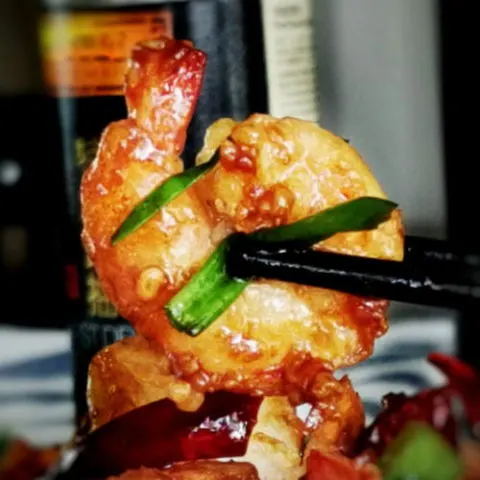
Kung Pao Shrimp
Kung pao shrimp is a traditional Chinese stir-fry dish popular around the world. It is a spin-off from Kung Pao chicken, the original dish how Kung Pao is prepared.
Ingredients
Ingredients A
- 500g shrimp, weight after clean and shelled
- 1 tsp salt
- 1/4 tsp ground white pepper
- 1/2 egg white
- 2 tbsp cornstarch
- 1 tbsp vegetable oil
Ingredients B
- 2 tsp Szechuan peppercorns
- 4 cloves garlic, coarsely chopped
- 5 thinly sliced ginger
- 2 stalks of scallion, cut the white section into 1/4 inch length, and green section into 1-inch length
- 8 dried chilies
- 1/2 green bell pepper, cut into one-inch square
- 1/2 red bell pepper, cut into one-inch square
- 1 medium-size onion, cut into half-inch square
- 2 tbsp cashews
Ingredients C
- 1 tbsp light soy sauce
- 1/2 tsp dark soy sauce
- 1 tbsp Chinkiang vinegar
- 2 tsp sugar
- 1/4 tsp ground white pepper
- 1 tsp sesame oil
- 1 tbsp Shaoxing wine
Ingredients D
- 2 tsp cornstarch
- 2 tbsp water
- Oil for frying
Instructions
Deep-fry the shrimp
- Wash the shrimp, drain, and pat dry. Butterflying the shrimp and remove the black string down its back.
- Season with some salt and ground white pepper.
- Coat the shrimp with egg white, follow by adding cornstarch sufficiently until the shrimps start to stick together.
- Add the shrimp into hot oil in small batches. Let it stays undisturbed for 15 seconds, then stir and loosen the shrimps from each other.
- Once the shrimp start to turn from opaque to light pink, remove and drain the oil.
Stir-frying to finish the cooking
- Heat some oil in the clean wok, toast the Szechuan peppercorns over low heat for one to two minutes. Discard the peppercorns.
- Saute the garlic, ginger, the white section of the scallion, and the dried chili in the peppercorn-flavored oil over low heat until aromatic.
- Add the onion to stir-fry until slightly translucent, then add the bell peppers and stir-fry over medium heat for half a minute.
- Pour the Kung Pau sauce (Ingredients C) into the wok. Give it a good mix.
- When they start to bubble, return the deep-fried shrimp to the wok.
- Mix water and cornstarch in ingredients D to form a slurry. Add it bit by bit to thicken the sauce.
- Add the green sections of the scallion.
- Once the sauce is thick enough, turn off the heat and add the toasted cashew. Dish out and serve.
Recommended Products
As an Amazon Associate and member of other affiliate programs, I earn from qualifying purchases.
-
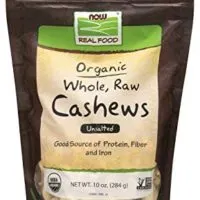 NOW Foods Raw Organic Cashews
NOW Foods Raw Organic Cashews -
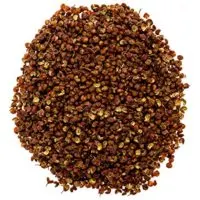 Soeos Authentic Szechuan Peppercorns (4 Ounces), Grade A Red Peppercorns, Sichuan Peppercorns, Chinese Peppercorns, Less Seeds, Szechuan Flavor Peppercorns, Szechuan Pepper for Mapo Tofu
Soeos Authentic Szechuan Peppercorns (4 Ounces), Grade A Red Peppercorns, Sichuan Peppercorns, Chinese Peppercorns, Less Seeds, Szechuan Flavor Peppercorns, Szechuan Pepper for Mapo Tofu -
Soeos Szechuan Dried Chili,Dry Szechuan Pepper, Dry Chile Peppers, Sichuan Pepper, Dried Red Chilies, 4oz, (Very Mild Spicy)
-
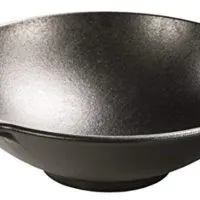 Lodge 14 Inch Cast Iron Wok. Pre-Seasoned Wok with Flattened Bottom for Asian Stir Fry and Sautees
Lodge 14 Inch Cast Iron Wok. Pre-Seasoned Wok with Flattened Bottom for Asian Stir Fry and Sautees
Nutrition Information:
Yield: 4 Serving Size: 1Amount Per Serving: Calories: 285Total Fat: 9gSaturated Fat: 1gTrans Fat: 0gUnsaturated Fat: 7gCholesterol: 211mgSodium: 1882mgCarbohydrates: 26gFiber: 3gSugar: 9gProtein: 27g
This data was provided and calculated by Nutritionix on 4/26/2021
Cook’s Note: Tips for Making Better Kung Pao Shrimp
- Removing the shell is necessary to allow the shrimp to be coated thoroughly with egg white and cornstarch. The combination of egg white and cornstarch is a classic coating used in Chinese cuisine for deep-frying. It protects the shrimp from direct heat, helping to seal in moisture and creating a juicy interior with a light, crispy crust on the outside.
- Some people prefer to sauté crushed Sichuan peppercorns along with the aromatics. I like to infuse the oil with their flavor by heating the peppercorns in the oil for one minute, then removing them. It is because not everyone enjoys biting into whole peppercorns.
- Szechuan peppercorns impart bursts of tongue-numbing ‘mala/麻辣’ goodness. It is not hot and spicy, but will leave a unique tingling numbness in the mouth, which is the signature of Szechuan cuisine.
- Dried chilies provide hotness to the dish. The amount of dried chilies depends on the level of heat you want. You can remove the seeds by cutting them lengthwise, then soaking them in water. The seeds will fall off on their own. Soak the chili until soft before adding it to the wok. Crushed chili flakes are a suitable substitute if dried chilies are unavailable.
- There will be some debris sticking to the surface if you use a cast-iron or steel wok. However, it is easy to remove this debris if the wok is well seasoned. You can also use a nonstick pan to deep-fry the shrimp, as the cornstarch tends to stick to the wok.
How to Make the Shrimp Crunchy (An Optional Step Worth Considering)
This is an optional step that makes the shrimp crunchy. It is also used when preparing shrimp dumplings (Har Gow, a renowned Dim Sum dish) when a crunchy shrimp texture is necessary.
- After deveining and removing the shell, place the shrimp under running water to wash thoroughly for 10 minutes. You may also clean them in a container to save water, but you still need to change it a few times.
- Place the shrimp in a container filled with water just sufficiently to submerge them. Add 2 teaspoons of salt and 1 teaspoon of baking soda, and soak them for 10 minutes. This process alters the texture of the shrimp meat to make it crunchy.
- Remove the shrimp and wash away the salt and baking soda.
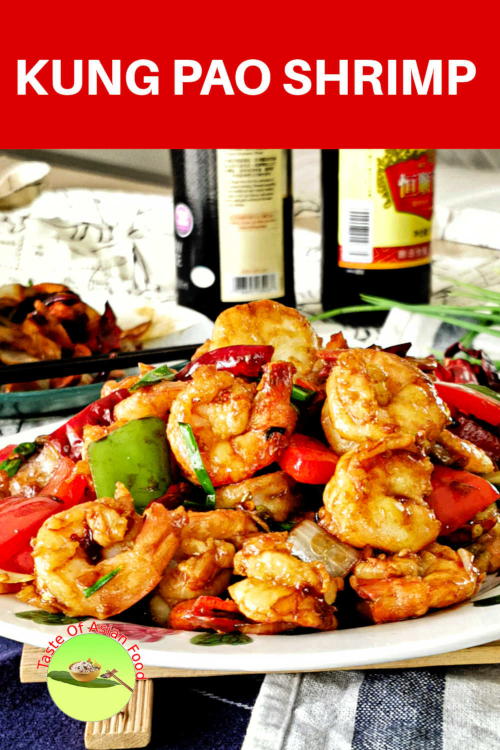
Related Recipes to Kung Pao Shrimp
If you enjoyed this Chinese recipe, you may also want to try the following dishes:
- Kung Pao Chicken – This is the sister dish to Kung Pao Shrimp, with a nearly identical method of preparation. This kung pao chicken recipe is a classic stir-fried dish originating from Sichuan Province, China.
- Chinese-Style Pan-Fried Shrimp – This dish offers a completely different flavor profile from Kung Pao Shrimp. The shrimp are pan-fried with their shells on, resulting in a savory and aromatic dish. A great option if you’re looking for something non-spicy.
- Shrimp Fried Rice – Elevate your shrimp fried rice with this recipe. I’ve included all the tips and techniques I use to achieve that restaurant-style flavor and texture.

Shirley
Monday 21st of July 2025
Can I pan fry instead of deep frying? Your recipes are excellent and I follow all and have cooked some. Delicious, Thanks for sharing.
KP Kwan
Tuesday 22nd of July 2025
Yes, you can pan-fry instead of deep-frying. It works well too.
Heyo
Saturday 18th of June 2022
It was great, didn't add the wine as I don't drink but it turned out awesome. Thanks Kwan!
Sharmaine
Saturday 1st of January 2022
Thanks for this recipe. In the description you mention Shaoxing wine but it is not listed in the actual recipe. How much Shaoxing wine should I use?
KP Kwan
Sunday 2nd of January 2022
Hi Sharmaine, Thank you for pointing out the error. I have added it to the recipe. It is 1 tbsp of Shaoxing wine.
KP Kwan
Thursday 29th of April 2021
Hi, this is KP Kwan. I am happy to see you in this comment area as you have read through my recipe. I am pleased to reply to any questions and comments as soon as possible.